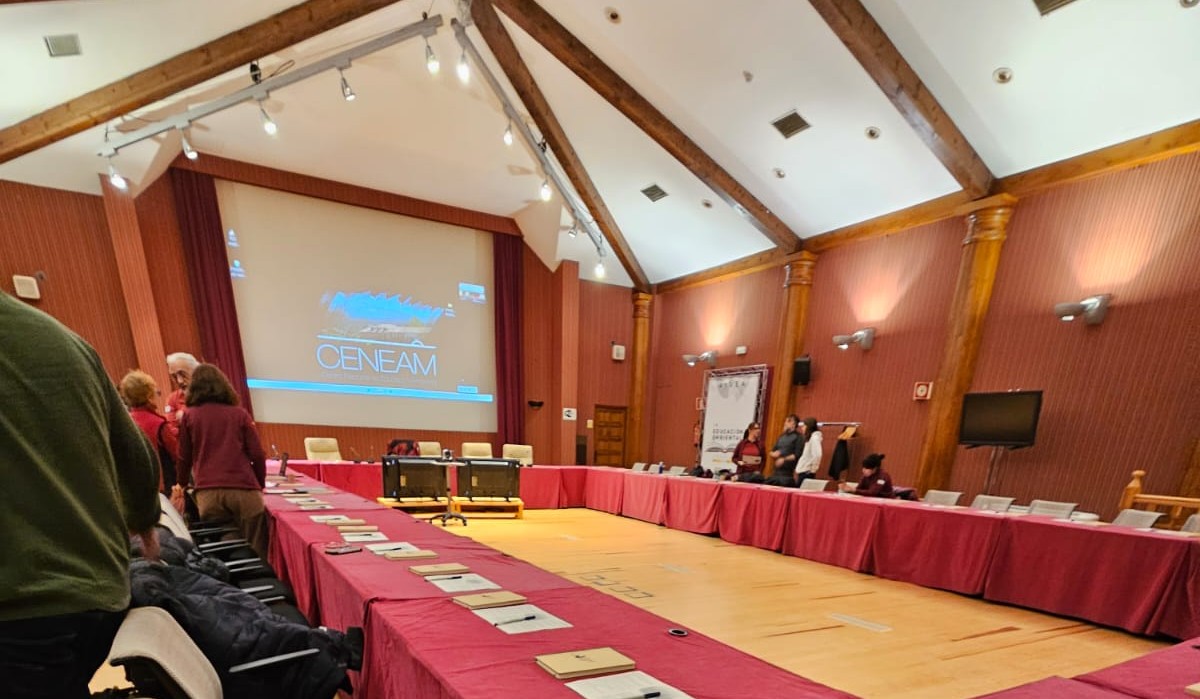
In its third year, the LIFE medCLIFFS project has taken on a certain shape and relevance at local, state and European levels, evidenced by the information and methodological exchanges with Italy. Here are some actions undertaken during the beginning of March related to the dissemination and knowledge transfer of the project to other sites in Spain, key areas of the project and even close zones where LIFE does not reach.
XIV National Parks’ Network Monitoring Seminar
– 3rd, 4th and 5th March 2025
Based on the topic “Biological invasions in National Parks” that this year centred the “Seguimiento a largo plazo en la Red de Parques Nacionales” (National Parks Network Long-term Monitoring), within the working group of the National Parks Network of CENEAM (Centro Nacional de Educación Ambiental – National Center of Environmental Education) a baseline centre in education on sustainability belonging to the Ministerio para la Transición Ecológica y el Reto Demográfico (Ministry for the Ecological Transition and Demographic Challenge), the LIFE medCLIFFS project was invited to promote the strategies to monitor and fight the invasive alien species (IAS).
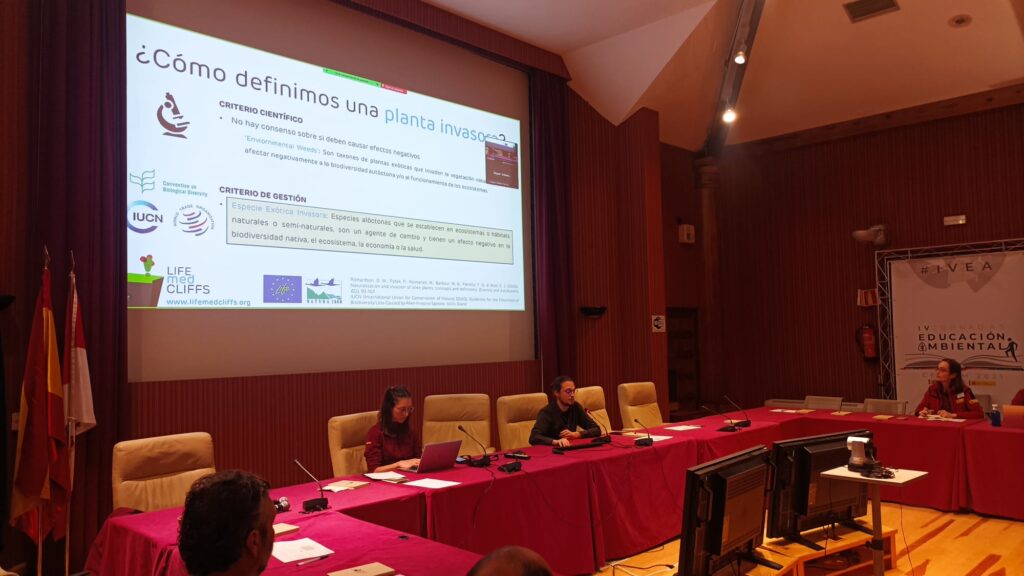
Arnau Bosch talking about LIFE medCLIFFS during the XIV National Parks’ Network Monitoring Seminar.
Arnau Bosch, representing LIFE medCLIFFS, explained the project and how the modelling and maps are useful tools for species management in a territory; the Code of Conduct, as a preventive tool; and the iNaturalist networks, as part of citizen science participation. The latter two were the most captivating points: the first one, National Parks and their net of influence were interested as they wished to create a similar document affected areas; and the second, they seek how to maintain the observation network users implicated. And so, the current strategy is based on adapting to each situation, participating in activities and field trips, and by using a tool such as Telegram, which streamlines the communication and organization with the users.
Lastly, Doñana and the Cíes Islands Parks showed great interest in the removal activities of Caprobrotus and Opuntia species, and their effectiveness inside and outside of the Natural Park.
IX Cap de Creus Natural Park studies presentation day
– 6th March 2025
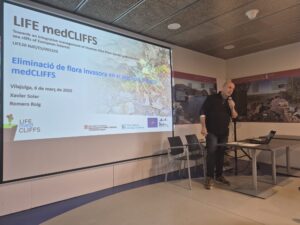
Presentation by Xavier Soler of the remotion actions of invasive plants at the Cap de Creus.
This conference, open to everyone and organized in the framework of the Annual Technological Transfer Plan (PATT), is the occasion to get to know the results of the different studies conducted in the Park, both on land and maritime ecosystems. The presentations were based on studies and actions related to knowledge outreach about the territory and how these are useful to improve its management. Consequently, it promotes knowledge transfer between institutions and the general public to get to know the region better and help detect if there are any weaknesses.
On behalf of LIFE medCLIFFS, Xavier Soler talked about the works done during 2024 within the framework of this project. It focused, especially, on the management methodology for the different target species, the public and private areas where it had been acted upon, and the agreements with the private properties. Agreements encompassed the commitment to extract the targeted species from the zone, either by the LIFE medCLIFFS technicians or the owners, and expecting a verification of the actions made.
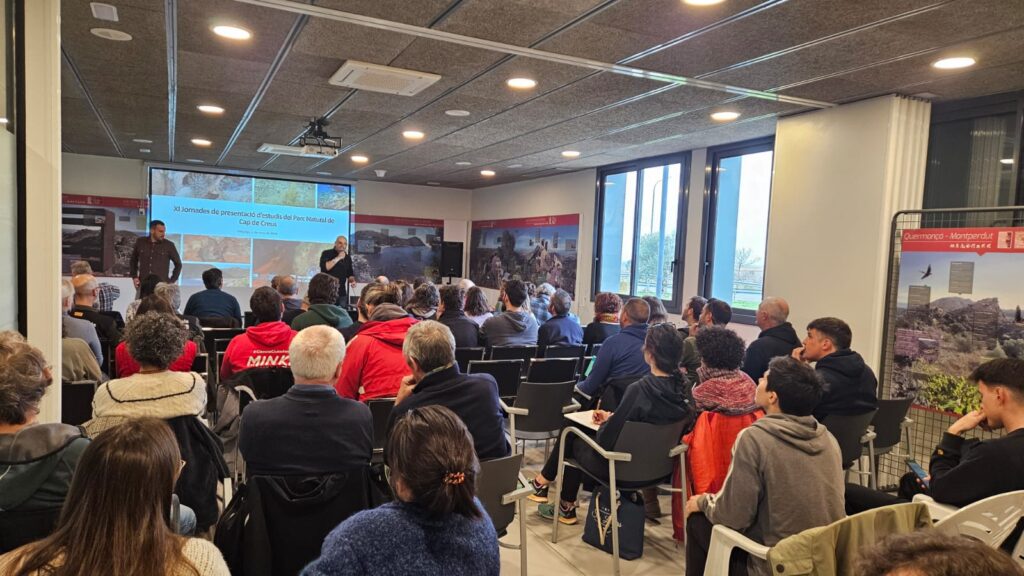
Presentation of Studies in the Cap de Creus Natural Park in Vilajuïga.
Governance table of the new project “Management and conservation of the shoreline of the Castell – Cap Roig natural area”
– 11th March 2025
This project is an initiative funded by the Territory, Dwelling and Ecological Transition department of the Generalitat, in a recollection of 12 different entities aimed at managing protected natural areas of the Girona province.
This one is mainly focused on the forested area and sea cliffs between Palamós and Palafrugell, including the maritime zone. Regarding the LIFE project, this Space of Natural Interest (EIN) falls between the transects C11 and C12. So then, after the Governance table meeting the intention is to collaborate between the two projects. LIFE medCLIFFS will provide information on management for the invasive flora found in the EIN, while this new project will feedback with data on the same problematic situation, in a zone where there are no transects and thus it is not being monitored.
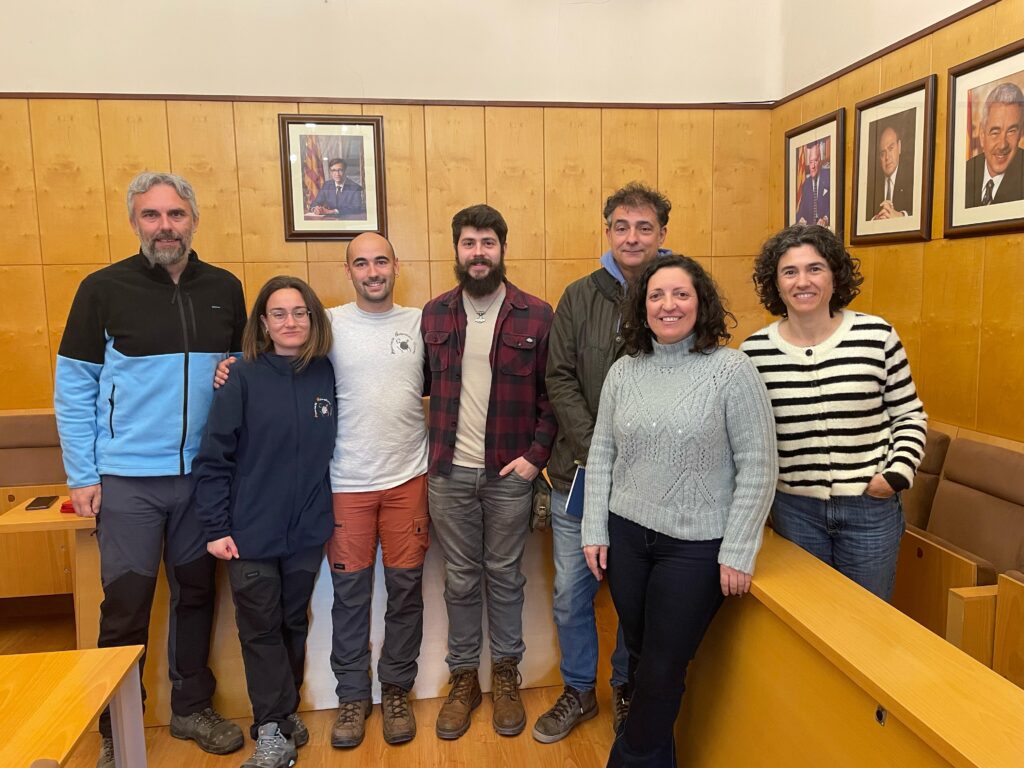
Members of the Governance table, from left to right: Ivan Bustamante (Serveis Territorials de la Generalitat), Alexandra Verdaguer and Pau Ortega (Associació Naturalistes de Girona), Edgard Mestre (LIFE medCLIFFS), Josep Vilanova (Ajuntament de Palamós), Noemí Pineda (Serveis Territorials de la Generalitat) and Rut Palomeque (Ajuntament de Palafrugell).
After the meeting, the commonly shared outcome was that one of the crucial topics to deal with is how to raise awareness to the locals on such complex problems, as biological invasions. It is by understanding, and acknowledging, the problem that the management will improve and then we can prevent future invasions.
Text: Edgard Mestre
Photos: Arnau Bosch, Joan Bech and Pau Ortega



